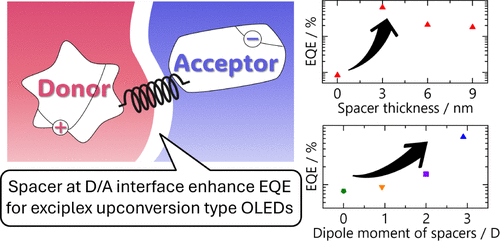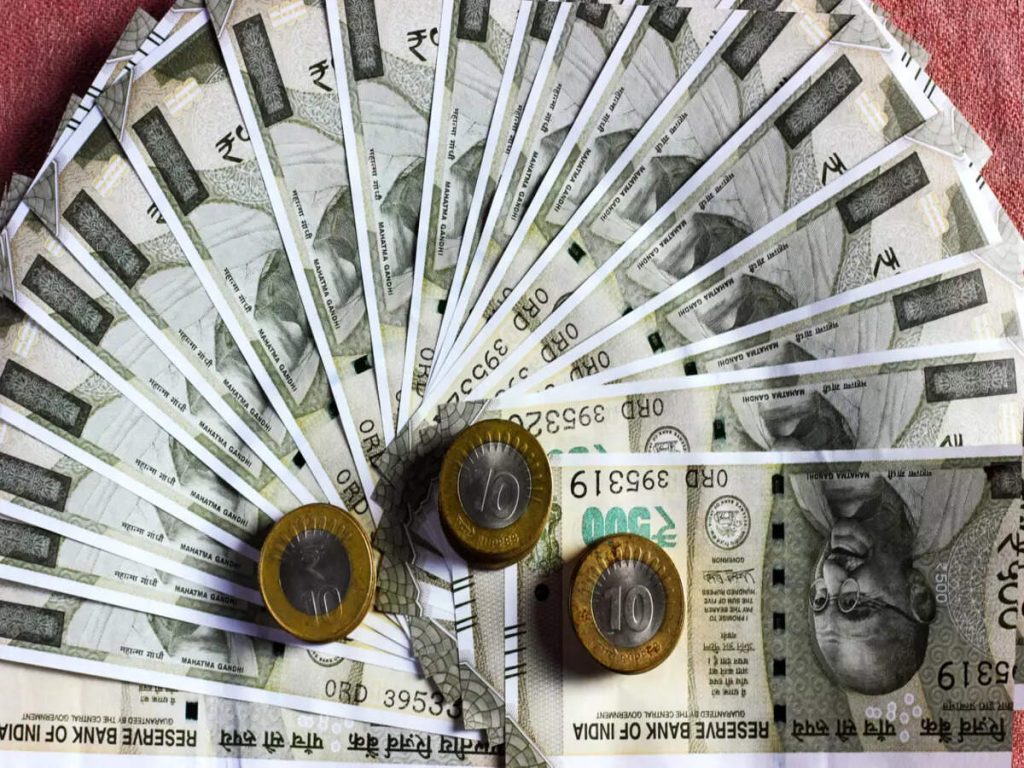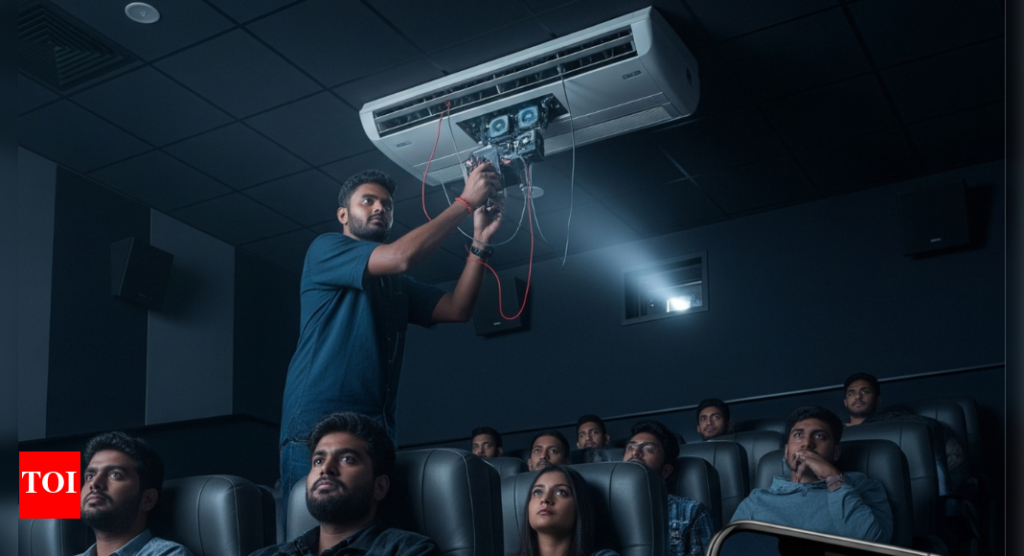Now Reading: How Spacers Are Revolutionizing Portable, Low-Voltage OLEDs
-
01
How Spacers Are Revolutionizing Portable, Low-Voltage OLEDs
How Spacers Are Revolutionizing Portable, Low-Voltage OLEDs

Inserting a nanometer-thin spacer in ExUC-OLEDs improves energy transfer, enhances blue light emission 77-fold, paving way for lightweight, low-voltage, and more flexible OLEDs . The effect of spacer insertion depends on the dipole moment. Therefore, it is possible to extend the material selection tolerance for ExUC-OLEDs using appropriate spacer materials. ExUC-OLEDs can be driven at ultralow voltages; furthermore, an improvement in the freedom of material selection can lead to more potential device applications, and energy-saving OLEDs can be expected in the future.
Potential Future Devices from superefficient OLED
Smartphones and Wearables:Ultra-thin, flexible displays: The lightweight and flexible nature of ExUC-OLEDs enables bendable or foldable screens for next-gen smartphones, smartwatches, and fitness trackers.
Low-power screens: Reduced voltage requirements (less than half of conventional OLEDs) extend battery life, critical for portable devices.
Televisions and Monitors:Energy-efficient displays: Enhanced blue light emission and lower power consumption make ExUC-OLEDs ideal for large, high-resolution screens with vibrant colors.
Slimmer designs: The thin spacer layer supports lightweight, sleek TV and monitor designs.
Augmented Reality (AR) and Virtual Reality (VR) Headsets:High-brightness, compact displays: The 77-fold boost in blue light emission supports vivid, high-contrast visuals in AR/VR devices.
Low-voltage operation: Reduces heat generation and power demands, improving comfort and battery life in headsets.
Automotive Displays:Flexible dashboard and HUDs: ExUC-OLEDs can be integrated into curved or transparent displays for dashboards, head-up displays (HUDs), or smart windows.
Energy savings: Lower power use aligns with electric vehicle efficiency goals.
Medical and Industrial Devices:Portable diagnostic screens: Lightweight, low-power OLEDs can be used in medical imaging devices or wearable health monitors.
Flexible industrial displays: Durable, bendable screens for rugged environments or wearable control panels.
Lighting Solutions:Organic lighting panels: ExUC-OLEDs can create thin, flexible, and energy-efficient lighting for homes, offices, or public spaces.
Customizable designs: Greater material selection freedom allows for tailored lighting solutions.
Hyperefficient OLED Characteristics
77-fold blue light enhancement: The nanometer-thin spacer improves energy transfer, significantly boosting blue light emission, which is critical for vivid, full-color displays.
Ultralow voltage operation: ExUC-OLEDs require less than half the voltage of conventional OLEDs, reducing energy consumption by up to 50% or more.
Material flexibility: Spacer insertion relaxes strict donor-acceptor compatibility, expanding material choices and enabling cost-effective, scalable production.
Lightweight and flexible: The thin design supports bendable, rollable, or transparent displays, opening new form factors.
Energy savings: Lower power needs reduce operational costs and environmental impact, aligning with sustainability goals.
Future Implications
Wider adoption: Expanded material tolerance could lower production costs, making ExUC-OLEDs viable for mass-market consumer electronics.
Next-gen applications: The technology could enable transparent displays for smart glasses, rollable TVs, or even skin-like wearable displays.
Sustainability: Energy-efficient OLEDs reduce electricity consumption, supporting eco-friendly device ecosystems.
Science Breakthrough
Exciplex upconversion-type organic light-emitting devices (ExUC-OLEDs) can emit light at less than half the voltage needed for conventional OLEDs, but their development remained limited by strict requirements for compatible donor and acceptor materials. Now, researchers from Japan have introduced a nanometer-thin spacer layer, boosting blue light output by 77-fold compared to previously incompatible materials. With a greater choice of materials, this design opens doors to energy-efficient OLEDs for a wide range of uses.
This could unlock the full potential of ExUC-OLEDs, researchers from the University of Toyama, Japan, have now proposed a simple yet effective design that can bring ExUC-OLEDs closer to commercialization. By inserting a nanometer (nm)-thin “spacer” layer between the donor and acceptor materials, the team enabled previously incompatible material combinations to function together, resulting in a 77-fold increase in blue light output.
The study, led by Associate Professor Masahiro Morimoto and co-authored by Mr. Ryosuke Fukazawa and Professor Shigeki Naka, was published online in the journal ACS Applied Optical Materials on June 4, 2025.
“The OLED industry is already substantial, but ultra-low-voltage drive OLEDs are a game changer because the materials and design concepts are different from those of the past. Using appropriate spacer materials opens up a wider selection of usable materials in ExUC-OLEDs,” explains Dr. Morimoto.
The spacer increases the physical separation between donor and acceptor molecules, weakening the Coulombic attraction that stabilizes the exciplex. This, in turn, raises the exciplex energy (EEx), improving its overlap with the triplet energy of the emitter. As a result, energy transfer becomes more efficient, resulting in light emission, even with material combinations that did not previously work.
In their experiments, the team used a blue-emitting donor material, α, β-ADN, and tested two different acceptors: HFl-NDI and PTCDI-C8, both with and without a bathocuproine (BCP) spacer. Without the spacer, the PTCDI-C8 device performed poorly, achieving a blue light emission efficiency of just 0.00083% due to the weak overlap between the exciplex energy level and the triplet excited state of the emitter molecule. However, with a 3-nm-thick spacer, the efficiency of the device increased to 0.064%, marking a 77-fold improvement.
Moreover, by varying spacer thickness from 0 nm to 9 nm, the researchers found that increasing the distance weakened the Coulombic interaction at the donor-acceptor interface, raising the EEx from 0.06 eV to 0.09 eV. However, a 3-nm spacer provided the best tradeoff, raising the exciplex energy sufficiently while still allowing efficient exciplex formation.
The team also tested spacers made from materials with different permanent dipole moments. Though the electrical properties and exciplex energies were largely unaffected by the spacer material, blue light efficiency varied significantly. High-dipole spacers, such as BCP, resulted in a higher external quantum efficiency of 6.4 x 10-2%, compared to just 7.8 x 10-3% for nonpolar spacers like UGH-2.
With this straightforward, scalable design for enhancing ExUC-OLEDs, this study marks a significant turning point in OLED technology. It expands the selection of usable materials and brings us closer to achieving ultra-low-voltage, energy-efficient OLEDs suitable for displays, wearables, and lighting systems.
“ExUC-OLEDs can be driven at ultra-low voltages; expanding the freedom of material selection could lead to a wider range of device applications, paving the way for future, energy-saving light-emitting devices beyond just OLEDs,” concludes Dr. Morimoto, optimistically.

Brian Wang is a Futurist Thought Leader and a popular Science blogger with 1 million readers per month. His blog Nextbigfuture.com is ranked #1 Science News Blog. It covers many disruptive technology and trends including Space, Robotics, Artificial Intelligence, Medicine, Anti-aging Biotechnology, and Nanotechnology.
Known for identifying cutting edge technologies, he is currently a Co-Founder of a startup and fundraiser for high potential early-stage companies. He is the Head of Research for Allocations for deep technology investments and an Angel Investor at Space Angels.
A frequent speaker at corporations, he has been a TEDx speaker, a Singularity University speaker and guest at numerous interviews for radio and podcasts. He is open to public speaking and advising engagements.






















